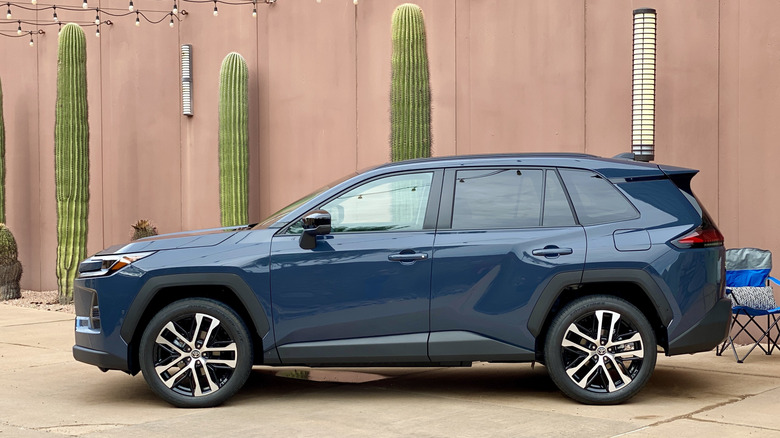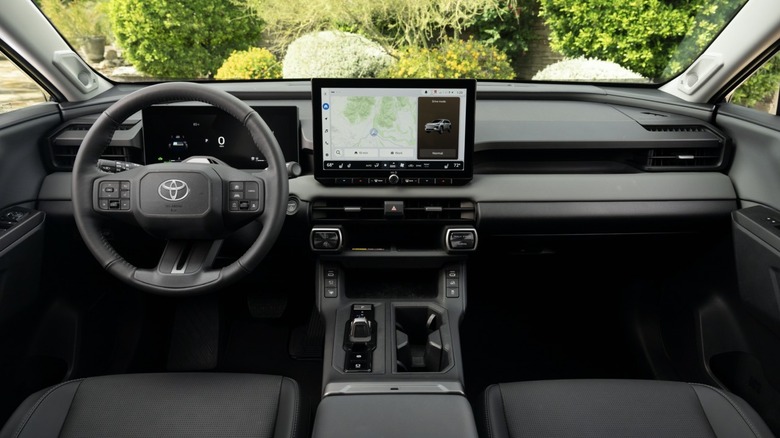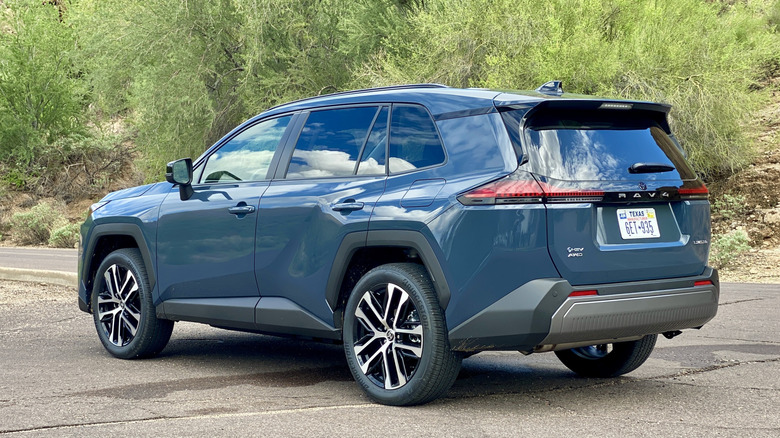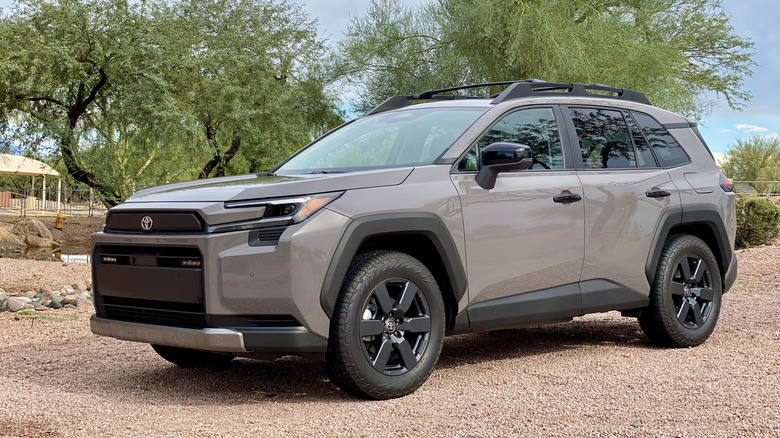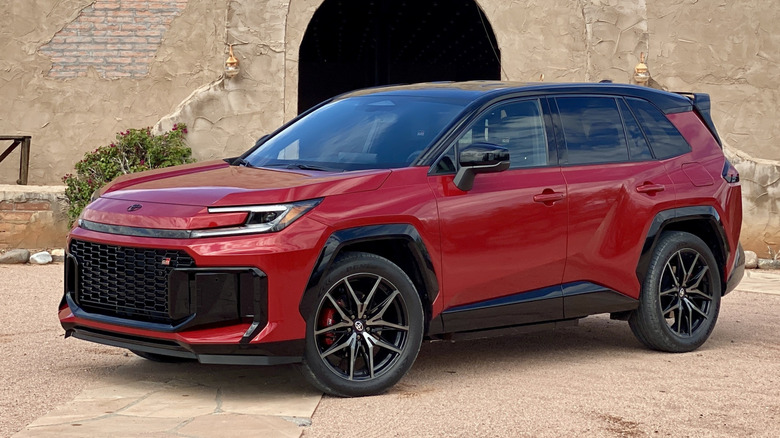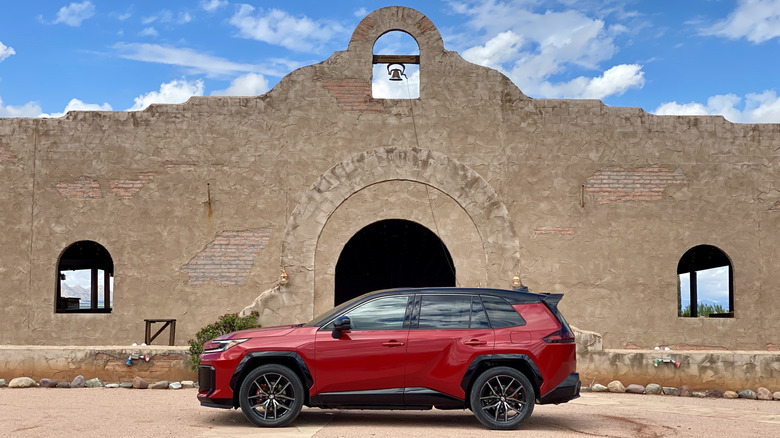Toyota's Hybrid 2026 RAV4 Gamble Pays Off, But Even The GR Sport Can't Hide Odd Choices
To best understand the redesigned 2026 Toyota RAV4, imagine a Venn diagram. Three circles represent three distinct styles, dubbed Core, Rugged, and Sport. Humming like electrons in those styles are seven trim levels. Then there are the three powertrain drivetrain combos, including the plug-in hybrid option (PHEV).
You'd think a standard hybrid powertrain from the hybrid leader would be more straightforward. What it lacks in straightforwardity, it makes up for with more power, greater efficiency, more standard convenience features, and a wholly modern interpretation of the bestselling non-truck in America.
For the first time, the RAV4 Hybrid comes with front-wheel drive standard, and all-wheel drive optional. AWD is standard on the RAV4 PHEV, the more robust plug-in hybrid that used to be called Prime. If only it still were, we could call the new GR Sport "Optimized Prime." It was inspired by Toyota's Gazoo Racing division.
We'll start with the changes across the board to the sixth-generation Toyota RAV4.
What's new for the 2026 Toyota RAV4?
The RAV4 maintains the same dimensional footprint, but under its boxier sheetmetal Toyota reinforced the suspension mounts and bolstered the joints where the roof pillars meet the body. The chassis improvements make for less turbulence in the cabin, and a quieter, smoother RAV4.
Despite the same proportions, the RAV4 is hip to be squared. It sheds the angular creases of its predecessor for a boxier, blockier look. Boxy wheel arches house 18- to 20-inch wheel designs, and a bulge fans out over the rear fenders similar to the Highlander models. An integrated rear roof spoiler squares off the tail, and vertical slashes cut through horizontal taillights.
The Venn diagram of the Core, Rugged, and Sport designs play out in the front fascia, mostly. Offered only as a hybrid, the Core encompasses LE, XLE Premium, and Limited trims. They look like the clearest descendant of the existing RAV4, with daytime running lights that clip the corners over a grater-like grille.
The Rugged design consists only of the Woodland model, which has small rectangular fog lights above the grille, all-terrain tires on 18-inch wheels, a black roof rack with cross bars, and a standard tow hitch with a 3,500-pound tow capacity.
Like the Woodland, the Sport models can be had as a PHEV. The Sport grades wear gloss black accents but the raciest elements are most epitomized by the first-ever RAV4 GR Sport. Red brake calipers peer out of 20-inch black alloy wheels wrapped in summer tires. A rear wing-like spoiler sticks out and a wide mesh grille flanked by slim vertical running lights defines the front.
Inside every RAV4 is a 12.3-inch digital instrument cluster and an enhanced 10.5-inch touchscreen (or available 12.9-inch touchscreen) with wireless Apple CarPlay and Android Auto. A new operating system, Arena, makes the displays quicker, clearer, and more responsive. Even though Toyota moved most climate functions into the touchscreen, buttons remain for adjusting temperature.
How does the new 2026 RAV4 drive?
For the first time, the RAV4 Hybrid comes with front-wheel drive. Enhancements to the power control unit and main propulsion motor makes the hybrid system more efficient and more powerful, too. With the 2.5-liter four-cylinder engine, it makes 226 horsepower total. That's 23 hp more than last year's gas-only RAV4 with FWD. All-wheel-drive models add a third motor for the rear axle, and total output increases to 236 hp (from 219 hp last year).
The main traction motor fills in power off the line for quicker starts than from a small turbocharged engine. It can travel in EV mode under light throttle until about 15 mph. The main traction motor otherwise supplements power from the carryover four-cylinder engine. Even with a stiffer chassis and more sound-deadening, the engine can be loud when pushed. It's chill at cruising speed, with only wind noise intruding on the top Limited grade we tested.
Toyota's electronic continuously variable automatic transmission and the hybrid control unit create smooth exchanges between motor and engine power. Sport models have paddle shifters that mimic eight gear shifts, but it's quicker to toggle from Normal through Eco, Sport, and Custom modes to get the response you want. There are no regen braking settings.
MacPherson front struts and a multi-link rear suspension support the RAV4, and the chassis improvements help diminish road rash but there's still body roll in corners that's common to crossover SUVs. Steering feel is on the light side, and overall the RAV4 AWD delivers as a quiet, quicker, yet more efficient daily driver.
Toyota expects the 2026 RAV4 to have an EPA rating of 44 mpg combined with FWD and AWD, which is a neat trick. Top AWD trims such as XSE and Limited net 42 mpg combined, while the taller ride height and all-terrain drop the Woodland to 39 mpg combined.
Is the 2026 RAV4 PHEV better than the regular hybrid?
A larger 22.7-kwh battery pack (from 18.1 kwh last year) and smaller, more efficient silicon carbide semiconductors in the power control unit boost the new RAV4 PHEV's estimated range from 42 miles last year to 52 miles in SE and XSE models. The PHEV is also offered in the Woodland trim, and it's standard on the new GR Sport.
The enhancements result in more power, from 302 hp last year to 324 hp in the most powerful RAV4 yet. All-wheel drive comes standard.
In EV mode, using only the three-motor system, the RAV4 PHEV jumps off the line like an EV, but the power tapers off just under 30 mph. It's a quiet errand-getter and ideal for conserving fuel during most daily driving activities.
To tap into its full power, leave it in Auto mode. Mash the throttle and the two propulsion motors work with the engine for an unofficial 0-60 mph time in the low-five seconds. The other two modes are Hybrid, which makes the system less dependent on battery power, and Charge, which relies on the gas engine only and helps recharge the battery. It's the optimal setting on the highway if the battery is low. When you get off the highway you can run in more efficient EV power for the last few miles to your destination.
The RAV4 PHEV weighs about 600 pounds more than the RAV4. That 4,500-pound curb weight, depending on trim, makes its heft known in the corners, but it's typical for the class.
When the battery power runs out, Toyota estimates the RAV4 PHEV should get 41 mpg combined in XE and XSE, or 38 mpg in Woodland, and 37 mpg in GR Sport. Thanks to the 14.5-gallon gas tank and regenerative braking, you won't be stopping as often on road trips.
Is the new RAV4 PHEV GR Sport the star of the line-up?
The new GR Sport trim sits 0.6 inch lower than SE and XSE grades, with 7.5 inches of ground clearance. Toyota equips it with 20-inch black alloy wheels and summer performance tires, though all-season tires can be swapped on for no cost.
In back-to-back testing with a heavier XSE model (it weighs 210 pounds more than a GR Sport) on a desert road cluttered with debris dried from a recent storm, the GR Sport handled marginally better. Grippier tires probably contributed to the bit of lift we detected, since there's no real change to the rear motor or the AWD system.
Most noticeable was how evenly it handled over the crumbles of dried desert. It jittered less than the XSE, due to the beefier rear suspension braces and tweaks to the suspension that result in more damping force. In turns, there seemed to be a bit less body roll, likely from those enhancements and from the damping in the front anti-sway bar.
We did two back-to-back loops. It's possible that our impressions were biased by the knowledge of what we were driving, the differences were slight enough. That notwithstanding, the GR Sport handled more solidly than the XSE without affecting the everyday comfort of the RAV4.
Without a price, it's hard to recommend, but all things equal, we'd take it over the XSE.
Charging the 2026 Toyota RAV4 PHEV
The Venn diagram of the RAV4 opens up to a portal mirror on the PHEV. The charge port door is on different sides, depending on the trim. It's on the driver's side for the XSE and Woodland, same as the gas door. For SE and GR Sport, it's on the passenger's side.
This is because the XSE and Woodland trims have DC-fast charging enabled through a CCS1 connector. Not a NACS port, as in the redesigned Toyota bZ. The RAV4 can DC-fast charge from 10 to 80% in 35 minutes. That's a long time for such a limited range, but it's an option at least. Toyota representatives said it's mostly for Europe, where the infrastructure is better supported and owners of PHEVs DC-fast charge with more regularity.
Yet, the GR Sport has DC charging capability in Europe, but not in the U.S. Toyota reps said they'll respond to consumer input, so it could happen. The SE and GR Sport grades have only an AC charge port with a 7-kW onboard charger. They'll take 3.5 hours to charge on a Level 2, 240-volt charger. The XSE and Woodland have an 11-kW onboard charger, so they get the job done in 2.5 hours.
It's one more thing to puzzle over in the new and undeniably improved 2026 RAV4. Maybe when Toyota confirms pricing, it'll all start to make sense.
